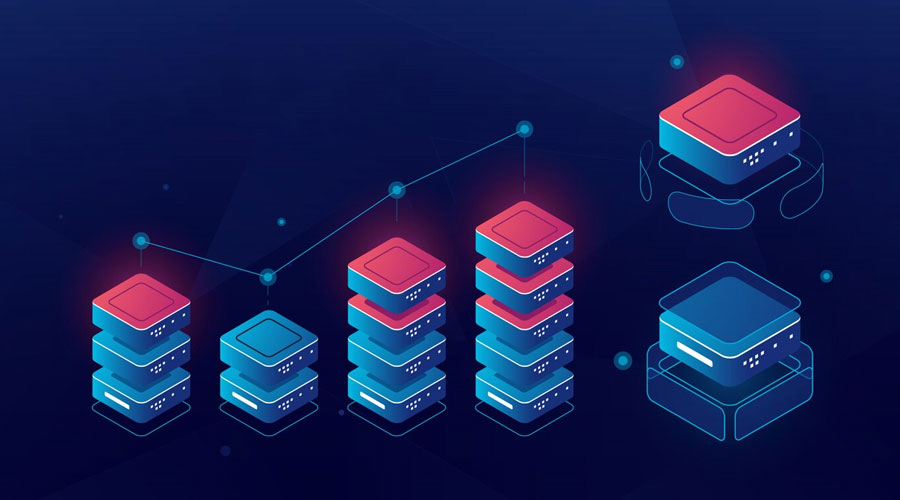Table of Contents
Introduction to Home Renovation Apps
In today’s fast-paced world, technology has made its way into every aspect of our lives, including home renovation and remodeling. Gone are the days of flipping through catalogues or consulting with interior designers for hours. Instead, homeowners now turn to their smartphones to plan, manage, and execute their renovation projects. This transformation has been made possible through home renovation and remodeling app development, a rapidly growing niche in the mobile application industry.
The Evolution of Home Renovation Apps
The concept of using technology for home improvement is not entirely new. However, the advent of smartphones and the proliferation of mobile applications have led to a significant increase in the popularity and utility of home renovation and remodeling apps. These apps serve as virtual tools that assist users in various stages of the renovation process.
- Idea Generation: Homeowners can browse through a vast database of interior design ideas, styles, color palettes, and furniture options. These apps often include high-quality images and 3D renderings, allowing users to visualize their dream home before making any decisions.
- Budgeting and Cost Estimation: Renovation apps often come with budgeting and cost estimation tools. Users can input project details, such as room size, material preferences, and desired features, to get a rough estimate of the project’s cost. This feature enables users to plan their budget more effectively.
- Contractor and Designer Search: Many renovation apps offer directories of professionals, including contractors, architects, and interior designers. Users can read reviews, view portfolios, and directly hire the right experts for their project.
- Project Management: These apps serve as project management tools, helping users create timelines, set deadlines, and track the progress of their renovation. Users can even communicate with contractors and designers through in-app messaging.
- Product Sourcing: Renovation apps often include shopping sections, linking users to online marketplaces where they can purchase the materials and furnishings they need for their project.
- Augmented Reality (AR) and Virtual Reality (VR): Some advanced apps offer AR and VR features, allowing users to virtually place furniture and experiment with different design elements within their space before making any purchases.
Key Features of Successful Home Renovation and Remodeling Apps
To create a successful home renovation and remodeling app, developers must integrate certain key features that cater to the needs of both homeowners and professionals. Here are some crucial elements:
- User-Friendly Interface: The app should have an intuitive and user-friendly interface, making it easy for homeowners to navigate and explore various options. Clear menus, icons, and a simple layout are essential.
- High-Quality Visuals: To inspire homeowners, the app should feature high-quality images, 3D renderings, and, if possible, AR/VR functionality. Visuals are a critical factor in decision-making during the renovation process.
- Budgeting Tools: Including a budget calculator is a must. Users should be able to input project details, and the app should provide a realistic cost estimate, taking into account materials, labor, and other expenses.
- Search and Matchmaking: A robust directory of contractors, architects, and interior designers is vital. Users should be able to search and filter professionals based on location, reviews, and project portfolios.
- Project Management: The app should enable homeowners to set project timelines, milestones, and budgets, helping them stay organized and on track throughout the renovation journey.
- Communication Tools: In-app messaging or chat features allow homeowners to communicate with professionals in real-time, reducing the need for multiple emails or phone calls.
- Augmented and Virtual Reality: To stay ahead in the market, consider integrating AR and VR features. These can significantly enhance user experience by allowing virtual placement of furniture and designs within the user’s space.
- Material Sourcing: Linking users to online marketplaces for purchasing materials and furnishings simplifies the renovation process. Integration with e-commerce platforms can provide a one-stop solution for homeowners.
The Development Process
Developing a home renovation and remodeling app is a complex process that requires careful planning and execution. Here’s a step-by-step guide to how it can be done:
- Market Research: Begin by conducting thorough market research to identify your target audience, their needs, and the competition. Understanding the existing landscape is crucial for success.
- Conceptualization: Define the core concept of your app, including the features, design, and functionality. Create a wireframe or prototype to visualize the app’s structure.
- Design and Development: Work on the app’s design and development. This phase includes creating a user-friendly interface, integrating the chosen features, and ensuring compatibility across various devices and platforms.
- Testing and Quality Assurance: Rigorous testing is crucial to identify and fix any bugs or issues. Ensure that the app runs smoothly and provides a seamless user experience.
- Beta Testing: Release a beta version of the app to gather feedback from users. This feedback can help you make necessary improvements before the official launch.
- Launch and Marketing: Once you are satisfied with the app’s performance, launch it on app stores like Apple App Store and Google Play Store. Implement a marketing strategy to promote your app and attract users.
- Maintenance and Updates: Regularly update your app to fix bugs, improve performance, and introduce new features. This ensures that your app remains relevant and competitive in the market.
The Future of Home Renovation and Remodeling Apps
The future of home renovation and remodeling apps looks promising. As technology continues to advance, these apps will become even more sophisticated and indispensable for homeowners and professionals. Here are some trends to watch out for:
- Artificial Intelligence (AI) Integration: AI can provide personalized design recommendations, analyze user preferences, and even predict renovation trends. It can also improve cost estimation accuracy.
- Sustainability and Green Design: With the growing emphasis on sustainability, renovation apps will likely include options for eco-friendly materials and designs.
- Smart Home Integration: Home automation and smart technologies will be seamlessly integrated into renovation apps, allowing users to plan for smart home features.
- Virtual Reality Showrooms: Users will have the ability to virtually visit showrooms and visualize products in their space, enhancing the shopping experience.
- Augmented Reality for DIY Projects: DIY enthusiasts will benefit from AR features that guide them through step-by-step projects and offer real-time assistance.
Market Analysis and Trends
To thrive in the competitive landscape of home renovation and remodeling app development, it is crucial to stay updated on market trends and emerging opportunities. Let’s delve into the current market analysis and trends in this rapidly evolving industry.
Market Analysis
- Market Growth: The home renovation and remodeling app development market has experienced steady growth in recent years. This can be attributed to increased consumer interest in home improvement and the convenience offered by mobile applications.
- Market Size: The market size varies by region but is generally on an upward trajectory. North America and Europe have been significant markets, but there’s substantial potential for growth in emerging economies as well.
- Competition: The market is highly competitive, with both established companies and startups vying for a share. This competition has led to innovation and improved app features.
- Consumer Demographics: The target demographic for home renovation and remodeling apps is broad, ranging from millennials looking to upgrade their first homes to older homeowners seeking to revamp their existing spaces.
- Monetization Models: App developers commonly monetize through a combination of methods, including in-app advertising, freemium models, and direct sales of premium features or content. Additionally, partnerships with home improvement retailers and professionals can be lucrative.
Trends in Home Renovation and Remodeling App Development
- Sustainability and Eco-Friendly Designs: A growing trend in home renovation is the focus on sustainability. Renovation apps are integrating features that help users choose eco-friendly materials and designs, promoting a greener approach to home improvement.
- AI-Driven Personalization: Artificial intelligence is being increasingly integrated into apps to provide personalized design recommendations based on user preferences and browsing history. This helps users discover designs that align with their tastes.
- Augmented Reality (AR) and Virtual Reality (VR): The use of AR and VR is on the rise. These technologies enable users to visualize renovations in their homes in real-time, which is a game-changer for decision-making. AR and VR showrooms are likely to become more common.
- Smart Home Integration: With the increasing popularity of smart home technologies, apps are integrating features that allow users to plan for and incorporate these technologies into their renovation projects seamlessly. This includes smart lighting, thermostats, security systems, and more.
- Cost Estimation Accuracy: Apps are incorporating advanced algorithms to improve cost estimation accuracy. By analyzing various factors, such as location, materials, labor costs, and historical data, users can obtain more reliable budget estimates.
- Collaborative Features: Collaboration between homeowners, contractors, and designers is easier with in-app communication features. These facilitate real-time discussions, sharing of project updates, and the exchange of ideas.
- Online Marketplaces and E-Commerce Integration: Many apps are becoming one-stop solutions by linking users to online marketplaces for purchasing materials and furnishings. The convenience of browsing and buying within the app streamlines the renovation process.
- DIY Assistance: Homeowners looking to take on do-it-yourself (DIY) projects benefit from apps that offer AR-guided instructions, tutorials, and real-time assistance. DIY features are expected to expand.
- Community and Social Elements: Some apps include social features that allow users to share their renovation projects, tips, and progress with a community of like-minded individuals. This fosters a sense of community and provides inspiration.
- Virtual Interior Design Services: Some apps are offering virtual interior design services, where users can consult with professional designers remotely. This trend is making expert design services more accessible to a broader audience.
- Blockchain for Transparency: While in its infancy, blockchain technology is being explored to provide transparency in the procurement of construction materials, ensuring their authenticity and origin.
- Regulatory Compliance: As the home improvement industry is subject to various regulations, apps are increasingly providing features and information to ensure that users comply with local building codes and regulations.
Key Features and Functionality
let’s explore some additional key features and functionality that can make a home renovation and remodeling app even more compelling and valuable to users:
- 3D Room Scanning: Integrate 3D room scanning capabilities using the smartphone’s camera. Users can scan their rooms, and the app can generate a 3D model of the space, allowing for precise planning and design visualization.
- Material Recognition: Implement AI-driven material recognition features that can identify materials in existing rooms through the camera. This enables users to easily match existing materials for repairs or renovations.
- Mood Boards and Inspiration Collections: Allow users to create mood boards by saving images and ideas from the app or the web. These boards can serve as inspiration and references for their renovation projects.
- Real-time Collaboration: Enable real-time collaboration between homeowners, contractors, and designers. This can include shared project boards, comments, and document sharing, ensuring everyone is on the same page.
- In-App Payments: Facilitate secure in-app payments for contractors, designers, and materials, making the financial aspect of renovations seamless and transparent.
- Feedback and Rating System: Implement a feedback and rating system for contractors and designers, helping users make informed decisions and promoting quality service providers.
- Project Milestone Tracking: Create a feature that allows users to set milestones and track their completion, ensuring the project stays on schedule.
- Inventory Management: If the user plans to reuse furniture or materials, provide an inventory management feature to keep track of existing possessions and their potential incorporation into the renovation.
- Permit and Regulations Information: Offer information on local building codes, permits, and regulations, guiding users through the legal aspects of their renovation.
- Virtual Consultations: Integrate video conferencing tools for virtual consultations with contractors and designers, reducing the need for physical meetings.
- Progress Photo Logging: Allow users to document and log the progress of their renovation with photos. This can serve as a visual timeline and reference.
- Community and Social Sharing: Create a community within the app where users can share their renovation experiences, ask for advice, and showcase their completed projects. This fosters a sense of belonging and engagement.
- Home Value Estimator: Incorporate a feature that estimates the potential increase in the home’s value after the renovation. This can be an excellent motivator for homeowners.
- Energy Efficiency Calculator: Provide tools to help users assess the energy efficiency of their renovation, encouraging sustainable and eco-friendly choices.
- Augmented Reality for DIY Repairs: Users can access AR guides for common home repairs and maintenance, such as fixing a leaky faucet or installing shelves.
- Multi-Language Support: To reach a wider audience, include support for multiple languages and localization to cater to users in various regions.
- Data Security and Privacy: Ensure robust data security and privacy measures, given that users will be sharing sensitive information related to their homes.
- Integration with Smart Home Devices: Enable integration with smart home devices, allowing users to control and manage their smart appliances and systems within the app.
Technology Stack
In the context of home renovation and remodeling app development, the technology stack plays a crucial role in ensuring the app’s performance, scalability, and functionality. Here’s an overview of the essential technology stack components you would need for developing such an app:
-
Front-End Development:
- Programming Languages: Choose a language for building the front-end interface. Common choices include JavaScript (with frameworks like React, Angular, or Vue.js) and HTML/CSS for layout and styling.
- User Interface (UI) Framework: Utilize a UI framework like Material-UI, Bootstrap, or Semantic UI to streamline the design and ensure a consistent user experience.
- Responsive Design: Implement responsive web design techniques to make the app accessible on various devices, including desktop, tablets, and smartphones.
-
Back-End Development:
- Server-Side Language: Select a server-side programming language like Python, Ruby, Node.js, or Java to handle the app’s business logic and server operations.
- Web Framework: Utilize a web framework that complements your chosen server-side language. For instance, Node.js can be paired with Express.js, while Python works well with Django or Flask.
- Database: Choose a database management system to store and manage user data, project details, and other app-related information. Options include relational databases (e.g., PostgreSQL, MySQL) or NoSQL databases (e.g., MongoDB).
- APIs: Develop RESTful or GraphQL APIs to facilitate communication between the front-end and back-end. These APIs are crucial for data retrieval, user authentication, and various app functionalities.
-
Mobile App Development (Optional):
- If you plan to offer a mobile app alongside a web app, you’ll need additional technologies and frameworks for iOS and Android development. For iOS, Swift and Xcode are commonly used, while for Android, Kotlin and Android Studio are popular choices.
-
Cloud Services:
- To ensure scalability and performance, leverage cloud services like Amazon Web Services (AWS), Microsoft Azure, or Google Cloud Platform (GCP) for hosting your app’s infrastructure.
-
Authentication and Security:
- Implement robust user authentication and security measures to protect user data and maintain user trust. Utilize technologies like JSON Web Tokens (JWT), OAuth, and HTTPS.
-
Data Storage:
- Store user-generated content, project data, and other information in a reliable and secure manner. Use cloud storage solutions or databases mentioned earlier.
-
Real-Time Features:
- If you want to incorporate real-time features such as chat or notifications, consider using technologies like WebSockets, Socket.IO, or Firebase Realtime Database.
-
Payment Processing:
- If your app involves transactions, integrate payment processing systems like Stripe or PayPal to facilitate secure and convenient payments.
-
Geolocation Services:
- Implement geolocation services and APIs to enable features like location-based searches, project mapping, and directions to showrooms or suppliers.
-
Analytics and Monitoring:
- Use analytics and monitoring tools like Google Analytics, Mixpanel, or New Relic to track user behavior, app performance, and identify areas for improvement.
-
DevOps Tools:
- Implement DevOps practices for continuous integration and continuous deployment (CI/CD). Tools like Jenkins, Travis CI, or GitLab CI/CD can automate the development and deployment processes.
-
Testing and Quality Assurance:
- Integrate testing frameworks and tools such as Jest, Mocha, Selenium, or Appium for automated testing, ensuring the app’s reliability and functionality.
-
Content Delivery Network (CDN):
- Utilize CDNs like Cloudflare or Akamai to deliver content efficiently, reduce load times, and improve the app’s overall performance.
-
Version Control:
- Use a version control system like Git to manage the source code and collaborate with team members.
-
Collaboration and Project Management:
- Employ collaboration and project management tools like Jira, Trello, or Asana to streamline project development and track progress.
Remember that the choice of technologies and tools may vary based on your specific requirements, budget, and the expertise of your development team. Additionally, staying up to date with the latest trends and best practices in app development is essential to ensure your home renovation and remodeling app remains competitive and appealing to users.
Launching and Marketing
After developing a home renovation and remodeling app with all the essential features, launching and marketing it effectively is crucial to ensure its success. Here’s a guide on how to do it:
Launching Your Home Renovation and Remodeling App
- App Store Submission: Submit your app to the Apple App Store and Google Play Store. Ensure that you meet their guidelines and requirements for app submission. This typically involves creating developer accounts and providing necessary assets like app icons, screenshots, and descriptions.
- Beta Testing: Before the official launch, consider conducting beta testing. This allows you to identify and fix any issues and gather valuable user feedback. You can invite a select group of users or use platforms like TestFlight (for iOS) or Google Play’s beta testing features (for Android).
- App Website: Create a dedicated website for your app. Include information about its features, benefits, and download links for both iOS and Android users. Make sure the website is mobile-responsive for easy access on smartphones.
- Press Kit: Prepare a press kit with high-quality images, videos, and promotional materials. This will be useful for journalists, bloggers, and influencers who may want to review or write about your app.
- App Launch Event: Consider organizing a launch event to generate buzz. This could be an online event, a webinar, or a press conference where you introduce the app to the public. Send out press releases to relevant media outlets and tech blogs.
Marketing Your Home Renovation and Remodeling App
- App Store Optimization (ASO): Optimize your app store listings. Use relevant keywords in your app’s title and description. Include compelling screenshots and an engaging app icon. Encourage users to leave positive reviews.
- Social Media Marketing: Leverage social media platforms like Facebook, Instagram, Twitter, and LinkedIn to create a strong online presence. Share engaging content related to home renovation, design ideas, and success stories using your app.
- Content Marketing: Start a blog on your app’s website and regularly publish articles related to home renovation, DIY tips, interior design trends, and more. This can establish your app as an authority in the field and drive organic traffic to your website.
- Email Marketing: Build an email list and send out newsletters with updates, tips, and success stories. You can also use email marketing to provide exclusive offers or discounts to subscribers.
- Influencer Marketing: Collaborate with home renovation and interior design influencers to promote your app. Influencers can create content, review your app, and reach a wider audience in your niche.
- Paid Advertising: Use paid advertising channels like Google Ads, Facebook Ads, and Instagram Ads to target potential users. Pay-per-click (PPC) campaigns can be highly effective for driving app downloads.
- App Reviews and Ratings: Encourage users to leave positive reviews and ratings on the app stores. High ratings can significantly boost your app’s visibility and credibility.
- Partnerships: Collaborate with other businesses in the home improvement industry, such as furniture stores, hardware retailers, or home renovation service providers. Cross-promotion can be mutually beneficial.
- User Referral Program: Implement a user referral program where existing users can refer new users to your app in exchange for rewards or discounts. This can help expand your user base.
- Analytics and Optimization: Continuously monitor app performance using analytics tools. Track user behavior, retention rates, and conversion rates. Use the data to make informed decisions and optimize your marketing efforts.
- Customer Support: Provide excellent customer support through various channels, including in-app chat, email, and social media. Address user concerns promptly to build trust and retain users.
- Updates and Feature Enhancements: Regularly update your app to fix bugs and introduce new features based on user feedback and industry trends. This shows that you are committed to improving the user experience.
Remember that successful app marketing is an ongoing process. It’s essential to adapt your strategies based on user feedback, market trends, and the evolving needs of your target audience. Consistency, creativity, and a deep understanding of your users will be key to growing your home renovation and remodeling app’s user base and brand presence.
Case Studies and Success Stories
Case Studies and Success Stories in Home Renovation and Remodeling App Development
-
Houzz – A Pioneer in the Industry:
Houzz is one of the earliest and most successful players in the home renovation and remodeling app development space. The platform began as a website but quickly transitioned into a mobile app to meet the demands of its growing user base. Houzz allows homeowners to browse millions of interior design photos, find professionals, and shop for home products, all in one place.
Success Highlights:
- Houzz reached over 40 million monthly users in 2022.
- The app received positive reviews for its vast collection of high-quality images and the “Visual Match” feature, which allows users to identify and shop for products within photos.
- Houzz has become a go-to platform for professionals in the industry, offering them a platform to showcase their work.
-
Planner 5D – Empowering DIY Enthusiasts:
Planner 5D is an app that targets DIY homeowners and design enthusiasts. It provides users with a user-friendly interface that allows them to create detailed floor plans and 3D home designs. Users can experiment with various interior elements, furniture, and decor to visualize their dream space.
Success Highlights:
- Planner 5D has over 35 million downloads and a highly engaged user community.
- The app’s AR feature enables users to visualize their designs in real-time within their homes.
- The company partnered with major furniture brands to offer in-app shopping, generating revenue while simplifying the purchasing process for users.
-
Sweeten – Connecting Homeowners with Contractors:
Sweeten is an app designed to simplify the process of finding and hiring contractors for home renovation projects. It connects homeowners with a curated network of vetted contractors, streamlining the often complex and stressful process of contractor selection.
Success Highlights:
- Sweeten has successfully matched thousands of homeowners with contractors, facilitating over $1 billion worth of renovations.
- The app’s review and rating system allows homeowners to make informed decisions when selecting a contractor.
- Sweeten has gained recognition in the industry for its transparency and quality assurance.
-
IKEA Place – Augmented Reality Shopping:
IKEA Place, developed by the global furniture giant IKEA, is a prime example of a home renovation app leveraging augmented reality technology. The app allows users to place virtual furniture in their real-world environment, providing an interactive and immersive shopping experience.
Success Highlights:
- IKEA Place has over 10 million downloads and has received positive reviews for its AR functionality.
- The app enhances the shopping experience, as users can accurately visualize how IKEA products would fit in their homes before making a purchase.
- It serves as a remarkable example of a retail giant embracing technology to improve customer engagement.
-
HomeAdvisor – A Comprehensive Solution:
HomeAdvisor is an app that goes beyond just design and ideation. It helps homeowners find local contractors, get quotes, and manage their renovation projects, all in one platform. It simplifies the entire renovation process from idea to completion.
Success Highlights:
- HomeAdvisor has a vast network of professionals, with millions of projects completed through the platform.
- The app’s ProFinder feature allows users to connect with local professionals based on their project requirements.
- HomeAdvisor’s “True Cost Guide” provides accurate cost estimates for various renovation projects, aiding homeowners in budgeting.
-
AR Home Design by Houzz – Immersive Experience:
As an extension of Houzz, AR Home Design harnesses the power of augmented reality to provide users with an immersive experience. Users can place 3D models of furniture and decor in their homes, making informed decisions about their design and purchasing choices.
Success Highlights:
- AR Home Design by Houzz is a natural evolution of the original app, showcasing the company’s commitment to embracing cutting-edge technology.
- The app’s AR functionality has received acclaim for its accuracy and ease of use.
- It empowers users to confidently design and furnish their spaces, making it a valuable tool in the renovation process.
These case studies and success stories highlight the diverse approaches and features that have contributed to the success of various home renovation and remodeling apps. Whether focusing on design inspiration, contractor matchmaking, AR/VR experiences, or comprehensive project management, these apps have reshaped the way homeowners approach home improvement projects. Their successes demonstrate the vast potential within the home renovation and remodeling app development industry.





















